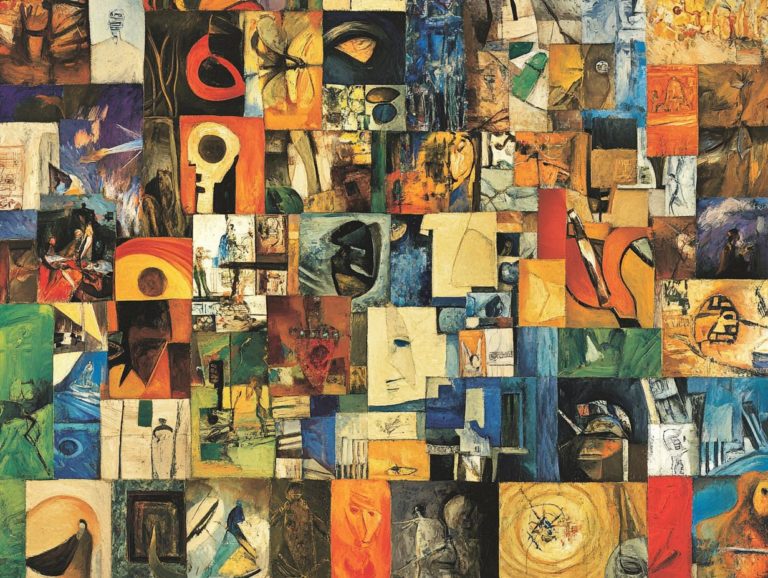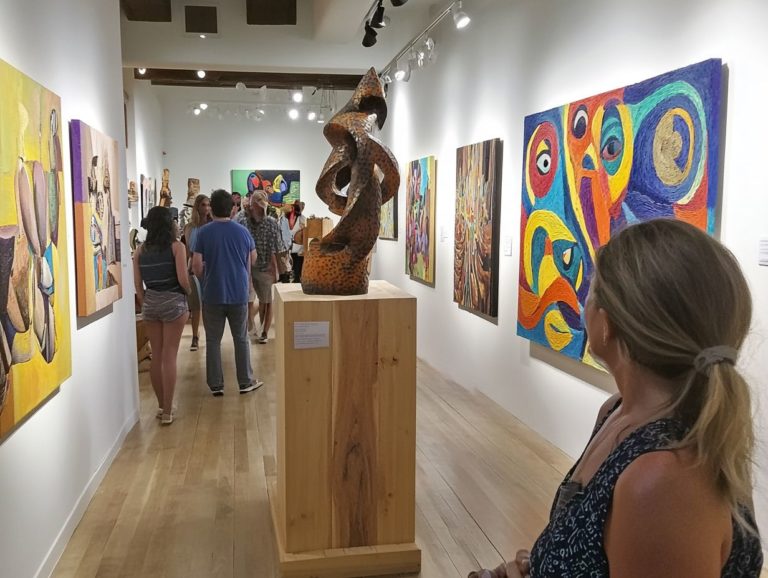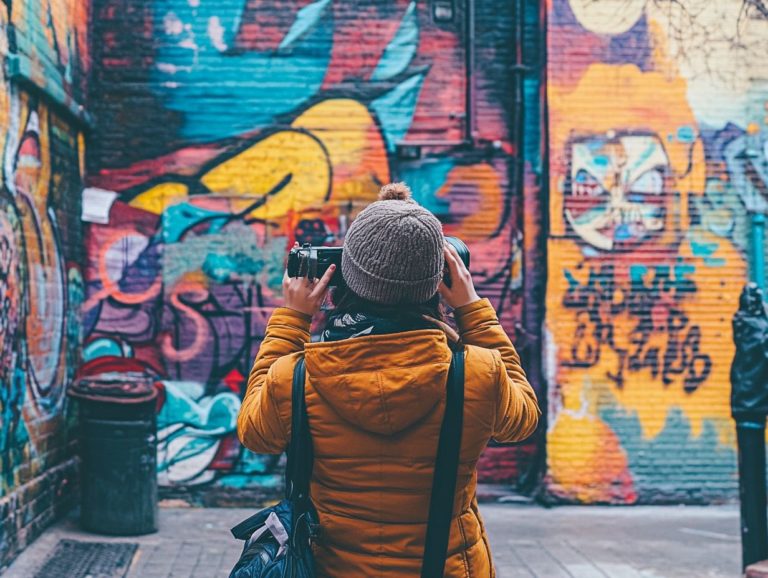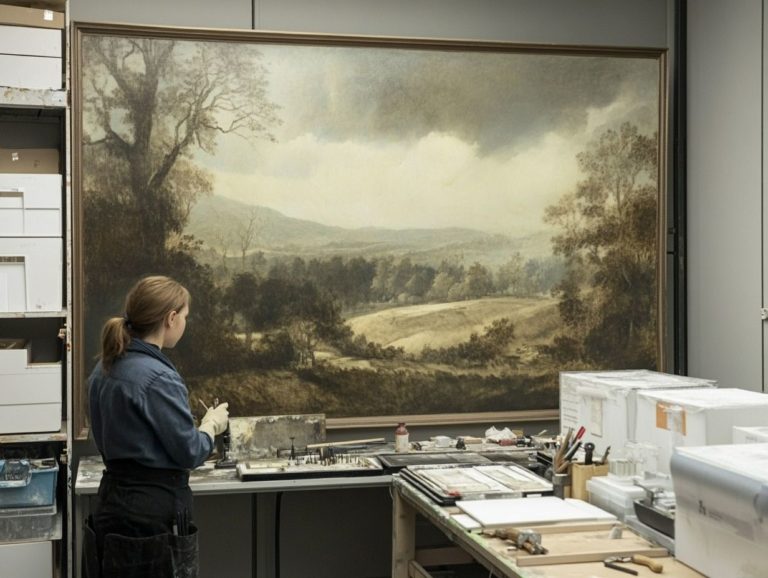Investing in Art vs. Traditional Assets
Art investing is an appealing alternative to traditional assets like stocks and bonds. It offers substantial returns and unique opportunities to diversify your portfolio.
Be mindful of the risks, such as market volatility and lack of regulation. This article reveals the benefits and challenges of art investing, compares it with conventional assets, and provides practical tips for navigating this market.
Uncover how to make informed decisions in the fascinating world of art!
Contents
- Key Takeaways:
- Benefits of Investing in Art
- Risks of Investing in Art
- Comparison with Traditional Assets
- Tips for Investing in Art
- Frequently Asked Questions
- Is investing in art a smart choice compared to traditional assets?
- What are the potential risks of investing in art compared to traditional assets?
- How does the value of art compare to traditional assets over time?
- What are the tax implications of investing in art versus traditional assets?
- What factors should I consider when deciding between investing in art or traditional assets?
- Are there any benefits to investing in art beyond potential financial returns?
Key Takeaways:
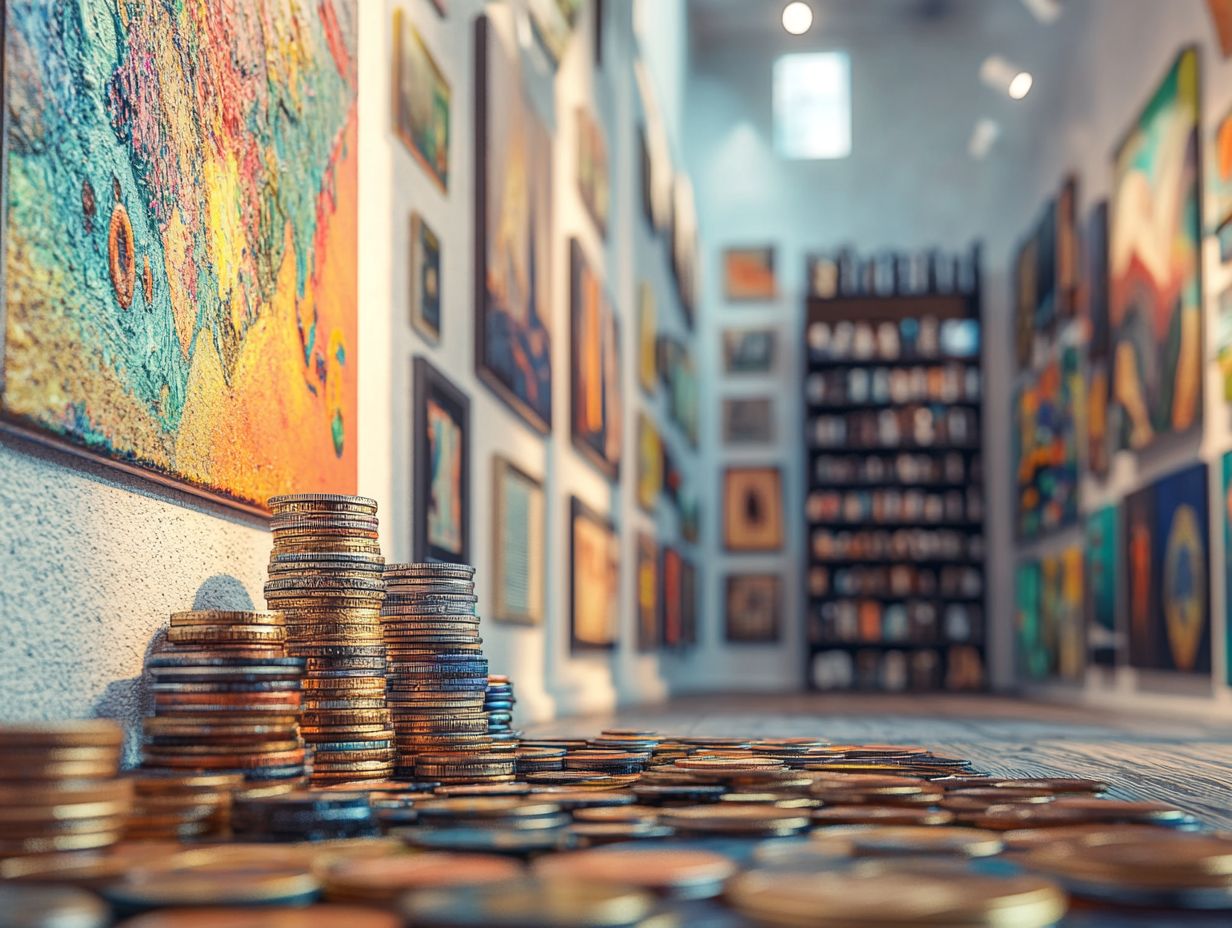
Investing in art can yield high returns, making it a lucrative option. Diversifying your portfolio with art helps mitigate risks and provides stability in volatile markets.
While art investment offers unique benefits, it also carries risks such as illiquidity and lack of regulation. Careful consideration and due diligence are essential.
What is Art Investing?
Art investing involves purchasing and selling artworks to generate financial returns, similar to traditional investments. This unique area includes both old and new artworks, with values shifting based on market trends and collector demand.
The art market continually evolves, attracting high net worth individuals eager to diversify their portfolios while enjoying the aesthetic and cultural richness of their acquisitions think stunning works by legendary artists like Mark Rothko, Vincent van Gogh, and Jackson Pollock.
The roots of art investing reach back centuries, with collectors engaging in transactions that held personal significance and profit potential. Today’s market features various art forms, including paintings, sculptures, and even digital art, each with unique valuation dynamics influenced by factors like provenance, condition, and the artist’s reputation.
Auction houses play a crucial role, providing platforms where significant pieces are sold often at jaw-dropping prices that reshape how value is perceived.
Investors employ diverse strategies, from acquiring works by emerging artists to snatching up classical masterpieces, underscoring the need for a well-rounded grasp of market trends and cultural narratives.
Benefits of Investing in Art
Investing in art presents a wealth of benefits for seasoned collectors and newcomers looking to enhance their wealth management strategies.
One compelling advantage is the potential for appreciation over time, which can yield impressive financial returns compared to traditional assets like real estate or stocks, including the S&P 500.
Art is a tangible asset that offers both emotional satisfaction and opportunities for diversification, especially during economic uncertainty.
Potential for High Returns
The allure of high returns in art investments captivates both seasoned collectors and novice investors, often surpassing traditional asset classes over time.
Consider blue-chip artworks by legendary artists like Willem de Kooning or Jackson Pollock, which can command astronomical prices at prestigious auction houses like Sotheby’s and Christie’s. This reflects their enduring demand and esteemed market reputation.
The Mei Moses World All Art Index reveals that, over the past several decades, art has outperformed other investment vehicles in terms of returns, boasting a consistent annual growth rate of around 10%. Expert analysis suggests that investing in art diversifies your portfolio while providing tangible assets that often appreciate in value.
Consider case studies, such as Francis Bacon’s “Triptych May-June 1973,” which fetched an astounding $84.5 million. This illustrates the extraordinary potential for gains, positioning art as a compelling alternative for both risk-averse and aggressive investors.
Such impressive performance metrics invite you to reassess art’s role in your financial planning and asset allocation strategies.
Diversification of Portfolio
Diversifying your investment portfolio with art provides a sophisticated buffer against price changes in traditional markets. Art pieces not only offer aesthetic enjoyment but also introduce assets that react differently to economic conditions.
This unique feature comes from art’s low correlation with stock market fluctuations, like those seen with the S&P 500.
Consider Ken Griffey Jr., the former baseball star. His collection of contemporary artworks has generated impressive returns.
During economic downturns, while stocks and bonds may struggle, select art pieces often hold their value or even appreciate. This demonstrates the resilience of art as an asset class.
Risks of Investing in Art
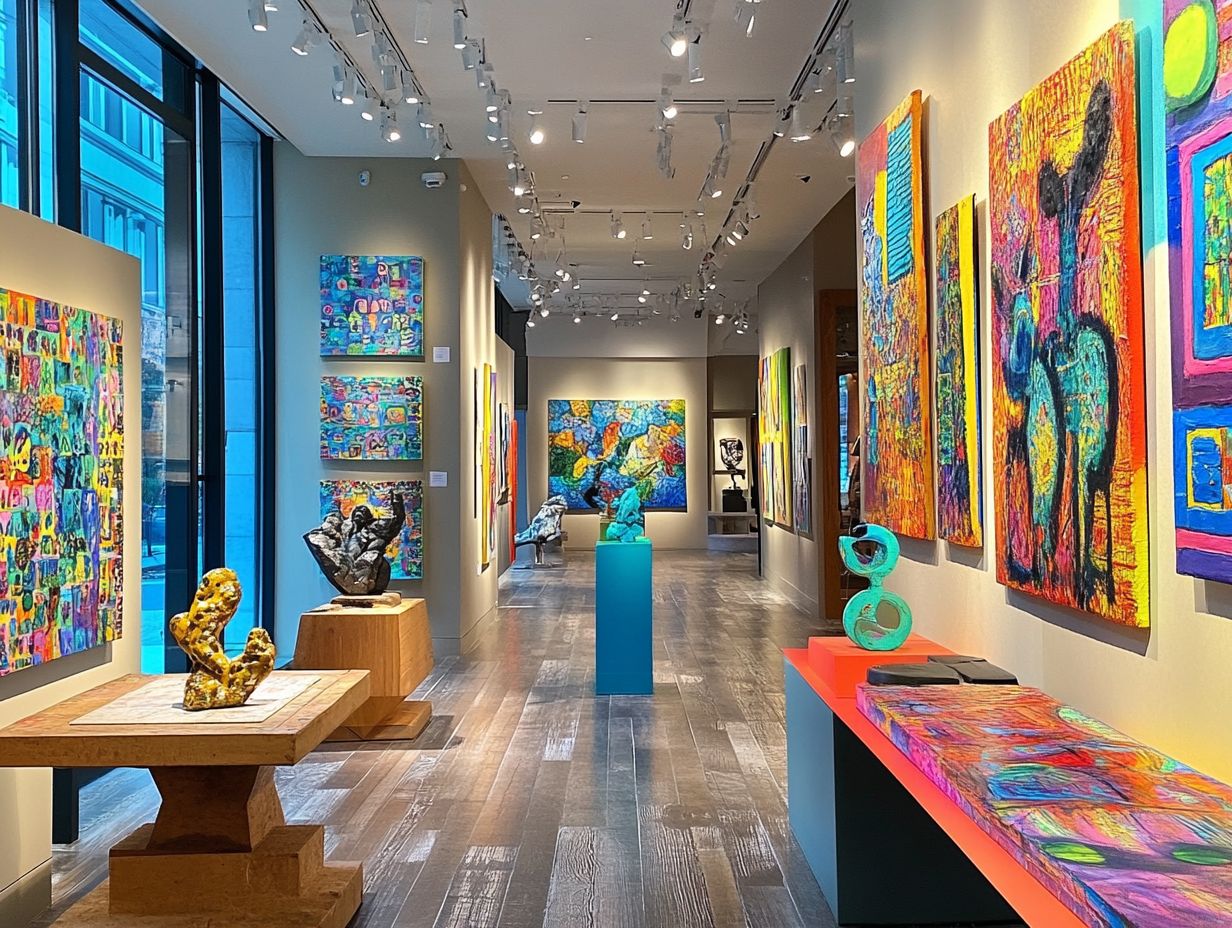
Investing in art can lead to exciting rewards, but you must recognize the inherent risks. The art market can be volatile, with prices swaying due to trends and economic shifts.
The illiquid nature of artworks presents challenges. Selling a piece may take time and incur high transaction costs, especially if there are disputes over authenticity.
Price Changes and Difficulty in Selling
The price changes and the difficulty in selling artworks should be significant considerations for you as an investor. Artworks can undergo rapid value shifts influenced by changing economic conditions.
Unlike stocks or bonds, which can be traded quickly, selling an artwork often requires considerable time. Auction prices can fluctuate widely based on market dynamics and buyer interest.
This unpredictability is especially pronounced during economic downturns. When spending tightens, you may find your prized pieces facing drastic price corrections.
To navigate these challenges, consider diversifying your collection. Including a range of artists and styles enhances your chances of retaining value.
Building relationships with galleries and auction houses gives you insights into market trends. This can help you make strategic decisions that improve liquidity when necessary.
Lack of Regulation and Transparency
A notable risk in art investing is the lack of regulation and transparency. This complicates your ability to assess value and authenticity.
Unlike regulated financial markets, the art market operates less formally. This can lead to conflicts of interest and challenges in determining fair prices.
Engaging with trustworthy art professionals can significantly mitigate these risks. Their expertise will help you navigate the complexities of the market.
Conduct thorough research, verify provenance, and seek opinions from qualified appraisers to safeguard your investment. A careful approach allows you to appreciate art while minimizing financial pitfalls.
Comparison with Traditional Assets
When comparing art investments to traditional assets, you’ll notice distinct performance characteristics. Unlike stocks and bonds, which undergo rigorous analysis, the role of art in alternative investment strategies thrives on subjective valuations.
Cultural trends and collector preferences influence these valuations, leading to varying risk profiles and potential returns.
Performance and Risk Factors
Assessing the performance of art investments compared to traditional assets like the S&P 500 Total Return Index uncovers both intriguing opportunities and notable challenges, including the risks of art investments.
While art has the potential to appreciate significantly over time, its performance can be quite unpredictable. Economic conditions often do not mirror those impacting stocks and bonds.
This unpredictability underscores the distinct nature of the art market, where aesthetic value, cultural trends, and the artist’s reputation are pivotal in determining worth.
Unlike equities, which can be quantified through metrics and trends, the art market relies heavily on subjective evaluations, leading to substantial fluctuations in value. While the S&P 500 typically offers steady returns, the potential for illiquidity in the art world presents its own set of hurdles when you look to sell pieces, particularly during economic downturns.
Grasping these nuances is crucial for anyone contemplating art as a viable alternative or complement to a traditional investment portfolio.
Tips for Investing in Art
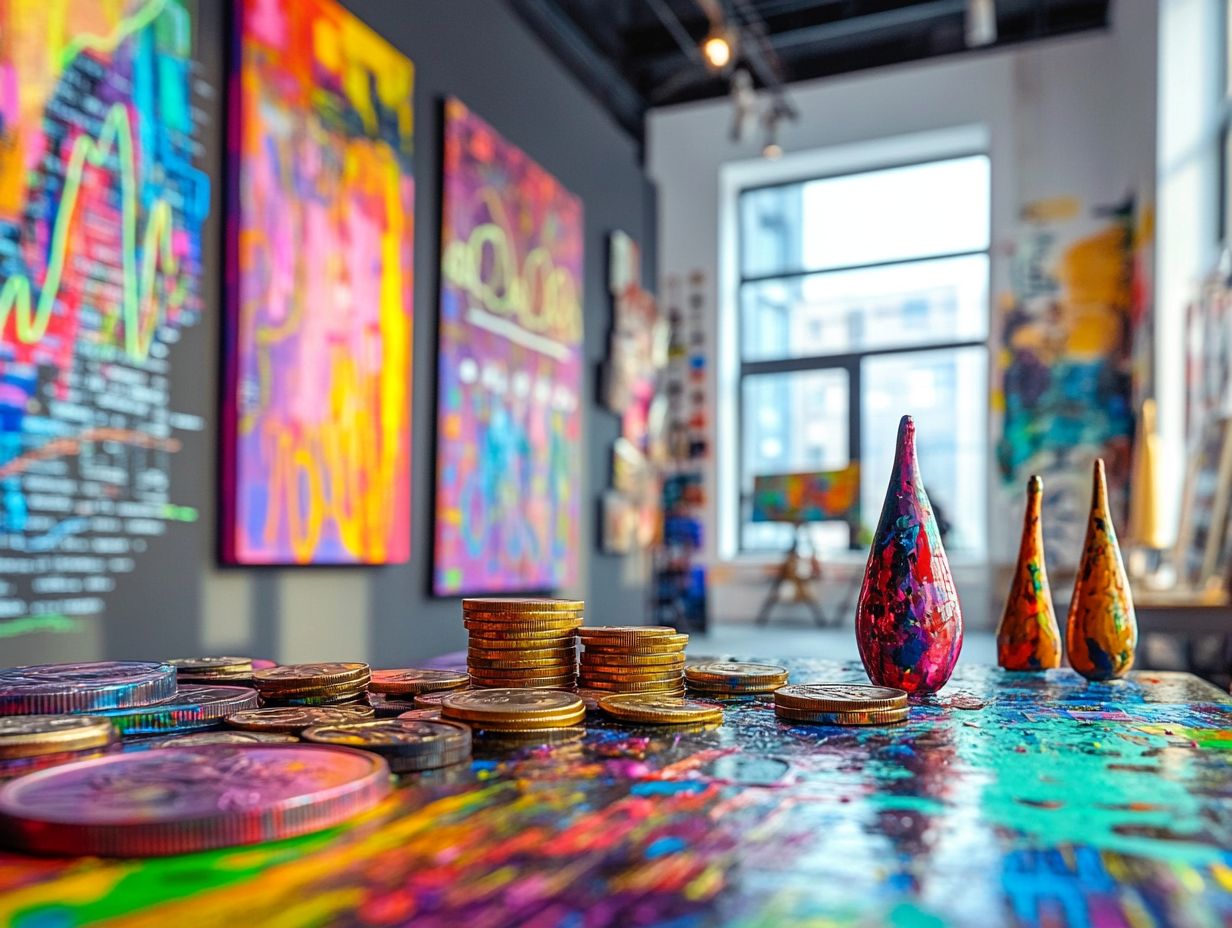
Investing in art demands thoughtful planning and well-considered choices. Adhering to certain tips can elevate your experience and boost your chances of success.
Engage in thorough research on market trends and the historical performance of various artworks. Consult with art professionals for invaluable insights and assistance in navigating the intricate landscape of the art market.
Research and Due Diligence
Thorough research is essential for anyone considering art investments. It helps reduce the risks linked to the unpredictability of the art market.
Engaging with auction houses and reputable art advisors can provide you with valuable insights into market trends, pricing history, and authenticity verification, ensuring that you make informed choices.
Exploring auction results is a smart way to grasp the financial landscape of the art world, as these events often reflect current demand and valuation trends.
Visiting art fairs like Art Basel allows you to experience artworks up close and engage directly with galleries and artists, giving you a deeper understanding of the pieces that pique your interest.
Don’t miss out on expert analyses. They offer critical insights into emerging artists and market dynamics.
Above all, verifying authenticity and tracking provenance (the history of ownership) is essential, as these factors significantly influence the value of your art investment.
Working with Art Experts
Collaborating with art experts and professionals can elevate your investing experience, granting you access to specialized knowledge and invaluable insights into the art market.
These advisors can help you curate exceptional art collections, recommending pieces that align with your personal tastes and financial aspirations while expertly guiding you through the complexities of buying and selling artworks.
By leveraging their connections, they effortlessly introduce you to galleries, auction houses, and other industry insiders, simplifying the process of discovering rare or emerging artists.
Art professionals utilize their analytical skills to evaluate market trends and predict future values, giving you the power to make informed decisions.
With a keen understanding of the nuances of art appreciation, they assist in assessing the investment potential of each piece, ensuring that you not only acquire artworks that resonate personally but also enhance the overall value of your collection over time.
Frequently Asked Questions
Is investing in art a smart choice compared to traditional assets?
Yes, investing in art can be a good alternative to traditional assets such as stocks, bonds, and real estate. Art has the potential for high returns and can diversify your investment portfolio.
What are the potential risks of investing in art compared to traditional assets?

Investing in art carries several risks. These include a lack of liquidity, high transaction costs, and the subjective nature of its valuation.
In contrast, traditional assets usually offer higher liquidity and lower transaction costs.
How does the value of art compare to traditional assets over time?
The value of art can change dramatically over time, similar to traditional assets. However, investing in art: strategies for beginners can deliver impressive long-term returns that sometimes outshine traditional investments.
What are the tax implications of investing in art versus traditional assets?
Art and traditional investments can have different tax rules. It’s wise to talk to a tax advisor to fully grasp how these investments affect your taxes.
What factors should I consider when deciding between investing in art or traditional assets?
Consider your risk tolerance and investment goals. Also, look into current market trends and the potential risks of each option.
Are there any benefits to investing in art beyond potential financial returns?
Absolutely! Art investment can offer cultural and personal value. Owning art can bring joy and support artists, positively impacting the art community.

